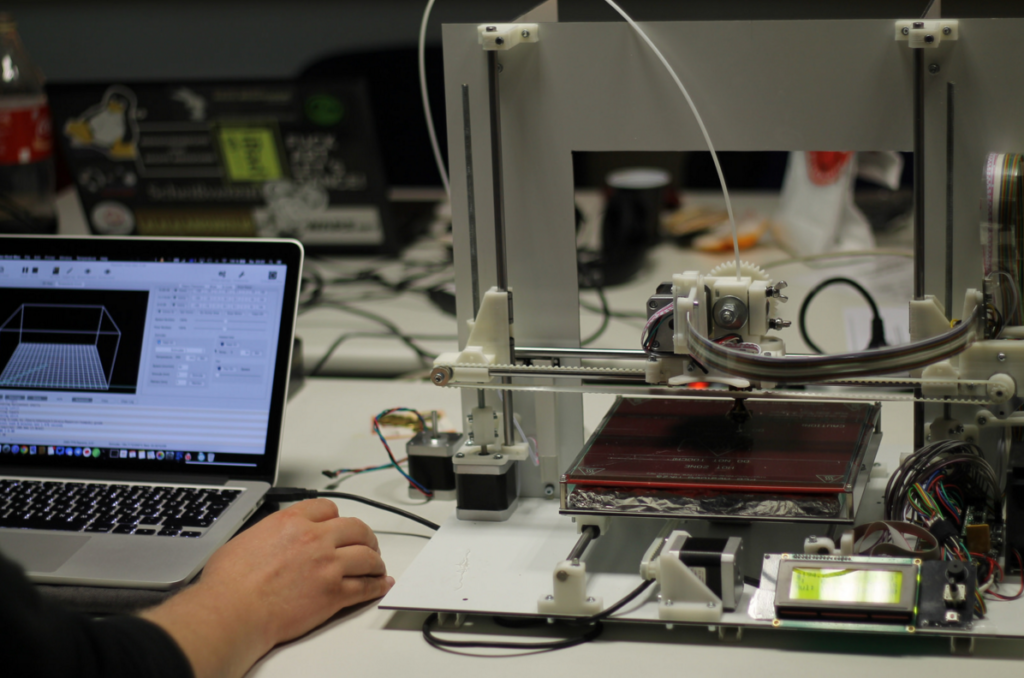By Elise Harmon, news editor
A group of three Northeastern University researchers – agraduate student, undergraduate and professor – are changing the way material scientists and engineers can 3D print small devices.
Joshua Martin, Brad Fiore and Randall Erb published their paper “Designing bioinspired composite reinforcement architectures via 3D magnetic printing” in the science journal Nature Communications on Oct. 23. The paper documented their development of a way to 3D print composite materials on a micro scale.
“We are mixing ceramics with polymers,” Erb, a professor of mechanical and industrial engineering at Northeastern, said. “You get the best of both worlds.You get the strength and stiffness of ceramics with the flexibility of polymers… There was no good way to 3D print composites until we came along. We invented this new method to print composites, and the key is that you have to control the orientation of very small fibers within your polymer matrix.”
The researchers, who are all part of the Directed Assembly of Particles and Suspension (DAPS) lab at Northeastern, are the first to apply magnetic fields to orient ceramic particles inside 3D-printed devices, according to Erb. Without orienting the particles, the composite is weaker than a pure polymer, but if they are oriented, the product is stronger.
“Strengthening materials with magnetically oriented platelets is pretty unheard of in three dimensions,” Fiore, a senior mechanical engineering major, said.
The technology took about two years of work to develop.
“There’s a lot of experimental stuff that went on in the early stages, just testing materials and figuring out what kind of material we wanted to make and then building the technology to make that material,” Martin, a graduate student pursuing a Ph.D. in mechanical engineering, said. “Right now we’re on our third printer, so there have been a few iterations over the last two years.”
The new technology has a variety of uses, allowing people to 3D print any plastic device out of strong, composite material.
“We’re working towards making some soldier-specific devices for protecting soldiers,” Erb said. “We are looking towards patient-specific devices in medical applications, and we’re looking at some fundamental studies on how we can manipulate the properties of a material based on its microstructure.”
According to Martin, the technology has both academic and industrial applications. Industrial applications include printing custom-reinforced prostheses and orthotics or complex parts for aerospace applications.
“The academic application is really to be able to create materials with control down to the microscopic scale,” he said. “We feel that what we’re working on adds a new dimension of control to the materials that you’re creating, and that allows us to bridge the gap between what material scientists study theoretically and what they can study experimentally.”
The technology led to their paper’s publication in Nature Communications. Fiore, who began working in the lab as a sophomore, said he never considered that he might be published in such a prestigious journal.
“Throughout the process, I was just trying to think ‘How can we make this good?,’ ‘How can we get the results we’re looking for?’ ‘How can we make this work?’” he said. “Now I’m just really excited to be a part of it. It’s so applicable in so many different field that it would be really great to see it really grow and expand.”
Photo courtesy MKzero, Flickr









